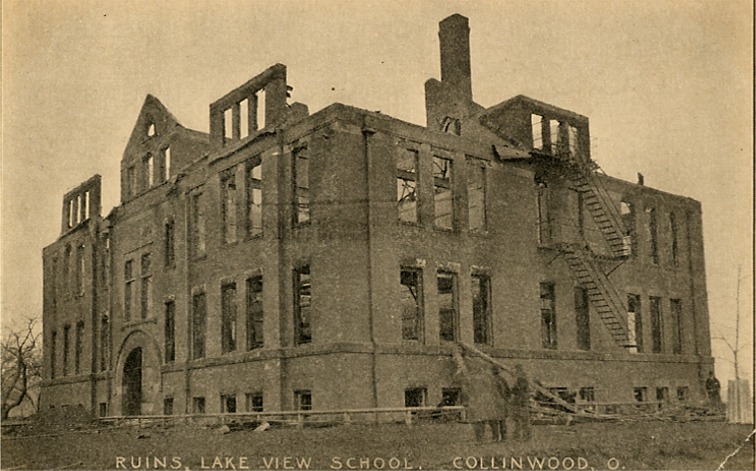The Investigation Begins
The very afternoon of the fire, investigations began. Fire Marshal Brockman interviewed the burned and bandaged Fritz Hirter on the grounds of the school. Fritz lost his eight-year-old Ida, and ten-year-old Walter, and had witnessed his thirteen-year-old daughter Helena burn to death inside the school. While there was some initial speculation that Hirter was somehow responsible for the blaze, this was quickly disputed and he was later hailed as a hero.
Official reports of the investigation have been lost to history, however according to news reports of the time and the book, “Complete Story of the Collinwood School Disaster, and How Such Horrors Can be Prevented” by Marshall Everett, 1908; no official cause was ever determined.
There was electrical wiring in the building, but that was ruled out. Also, the steam pipes leading from the boilers up through the school were reportedly wrapped in asbestos to insulate the wooden components of the structure from the intense heat. However, there were many identifiable factors to the large loss of life that were immediately apparent.
We have already mentioned and discussed the choke-points at the bottom of the stairs. Having any kind of narrowing at a point of egress not only causes a delay in getting out, but it almost certainly guarantees an outcome as we have discussed in this series. Those who are trying to escape can and will trip and fall; and those behind them don’t realize it until it’s too late and they fall on top of them.
That decision to build the partitions proved to be fatal.
One fact that has been verified by multiple sources is that all of the exterior doors swung outwards. There were no doors leading outside that had to be pulled back into the building in order to open them. Also, the exterior doors were about thirty-six inches wide which is the minimum standard width of any door sold or installed today in the united states. The stairs were also similar in width and comparable to todays standards.
Also, the schools construction of brick walls and a completely timber interior made of white pine, turned the structure into a charnel. Since brick won’t burn but pine does, the walls acted as a chimney and fireplace. It kept the heat and flames concentrated inwards and all of the fuel came from the wooden beams, floorboards, furniture, and anything else that could burn.
Lessons Learned
As a result of the Lake View School fire, many building codes regarding schools were immediately changed. No longer were there to be schools taller than three stories, nor were they to have wooden interior structures. Fire escapes were ordered to be installed in existing schools in multiple states including Nebraska and Wisconsin. On March 10th, 1908, the Omaha Daily Bee reported that, building inspector Edward Koch ordered the third floors of sixteen Milwaukee schools to be closed until fire escapes were installed in the buildings.
Organizations such as the National Fire Protection Association and documents like the International Building Code were established to provide standards for existing buildings and new construction. As part of these standards, egress capacity is determined by the number of occupants of a building floor. In other words, the more people you have in one place, the larger the exits have to be.
The International Building Code also specifies that egress openings must be a minimum of thirty-two inches wide. There can also be no restriction between the bottom of the stairs used for egress and the doorway. In other words, what happened in Lake View can not happen anywhere else.
A sad fact about the school in Collinwood is that the stairs were thirty-six inches wide, as well as the exterior doors. The narrowing point with the partitions for the additional coat storage brought students to a halt when their path of escape narrowed to just twenty-eight inches. Most diagrams and documentation from the time shows that this critical point was only five-feet from the exterior doors, meaning that the victims died literally within sight of safety.
Aftermath
In 1908, there were no national organizations or government agencies to assist the families of children lost in the fire. However, the village of Collinwood set aside $25,000 to help with the funerals. Services lasted for days on end. There were one-hundred-seventy-five bodies to bury.
Churches, funeral homes, businesses, and individuals all donated to help not only with the costs of burials, but also to help the families financially. Many parents of deceased children were described as despondent, or suicidal. Mental health was not a known term or practise at the time, however members of the community did step up and help the grieving families. Care and concern spread across the country with the news of the fire. “The Collinwood School Children’s Monument Commission”, managed by the village council, worked through the postal service at the time to send for donations across the nation in order to erect a memorial in honor of those who lost their lives that day.
Not long after the last funeral, the business and directors of collinwood were getting back to the business as normal. As part of moving forward, directors initially saw fit to build a new school on the exact grounds of the lake view school. This caused an uproar amongst the citizens of Collinwood including Robert Scholl, a local contractor, who lost his eleven-year-old son Edward in the fire.
“If the board persists in building on the old site, the people of north Collinwood will call upon it with shotguns.” – Robert Scholl
After the public outcry and legal proceedings having been filed, the state of Ohio made the decision to settle the matter and purchased the land where Lake View had stood. More than a year had passed after the Lake View school and half of its students burned, construction was started on the Collinwood Memorial school. With the new schools completion several years away, children attended school in temporary rooms that were considered to be completely unsanitary and unfit at the time by inspectors. However since a new school building was already under construction, these conditions were considered temporary.
In 1911 construction on the Collinwood Memorial school was completed. Built to the highest standards of fire resistance at the time, it featured no less than twelve readily accessible exterior doors for a building slightly larger than the Lake View school. A stone engraving on the building read, “Schools and the means of education shall forever be encouraged”. The school was demolished in June of 2004.
While not much is known of Emma Neibert’s life after the fire, an obituary lists her death in January of 1964 at age seventy-two. Frederick “Fritz” Hirter, the janitor who rang the alarm bell and heroically unlocked one of the exit doors during the fire, continued living even after losing his three children in the fire. His wife Elizabeth passed away in 1943, fifteen years before Fritz died at the age of ninety-five.
Today, a memorial stands on the grounds of the Lake View school. The village of Collinwood itself was the last victim of the fire. Unable to guarantee that it could sufficiently protect residents from fires, the citizens voted for annexation and the village became part of the city of Cleveland in 1910. Around the Lake View school fire memorial garden, the names of the victims are engraved on pavers, keeping their memories forever.
The Lake View School Memorial
Our very own Jeff Moss visited the Lake View School Memorial last month. Here are some of the photos he took:
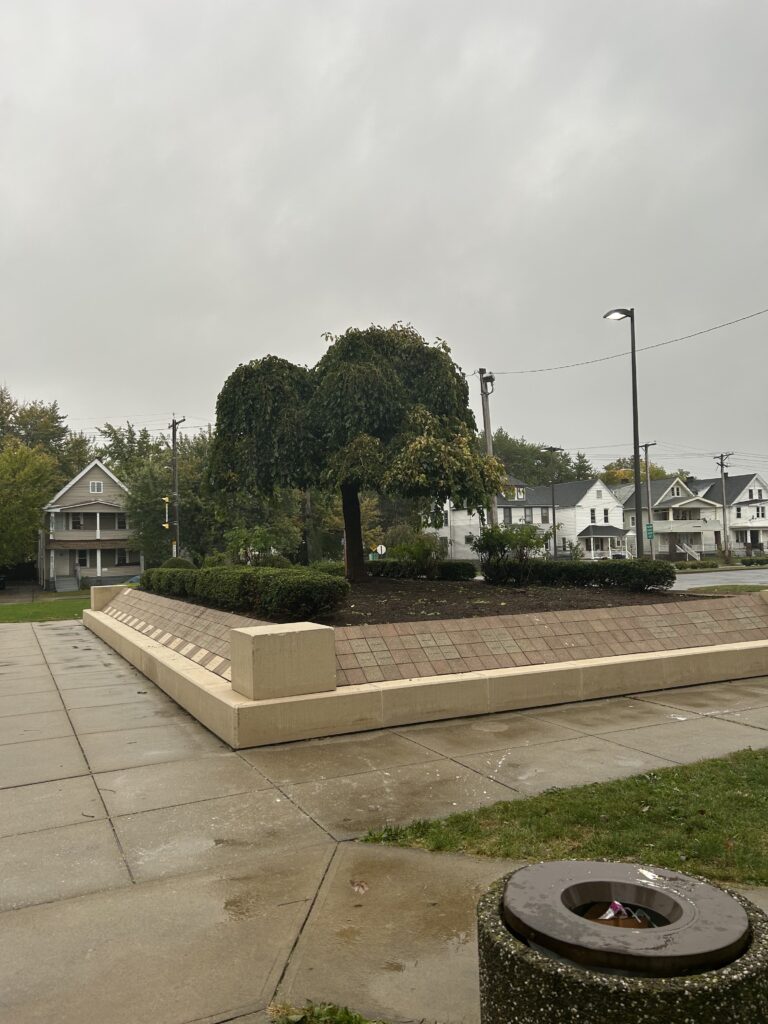
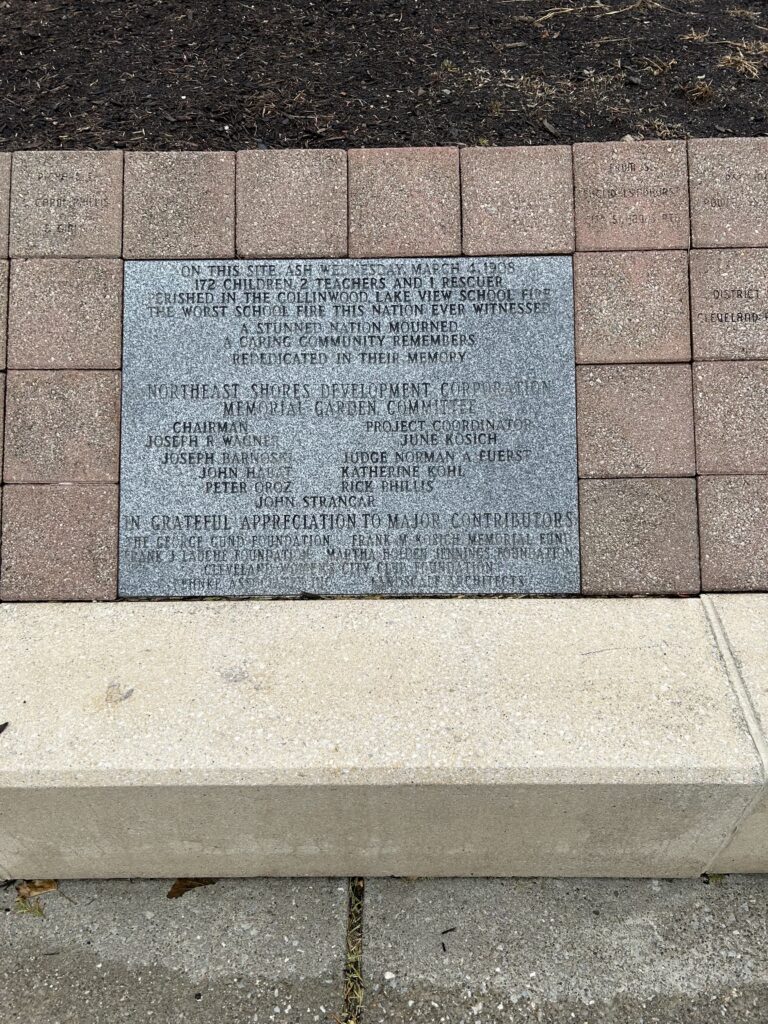
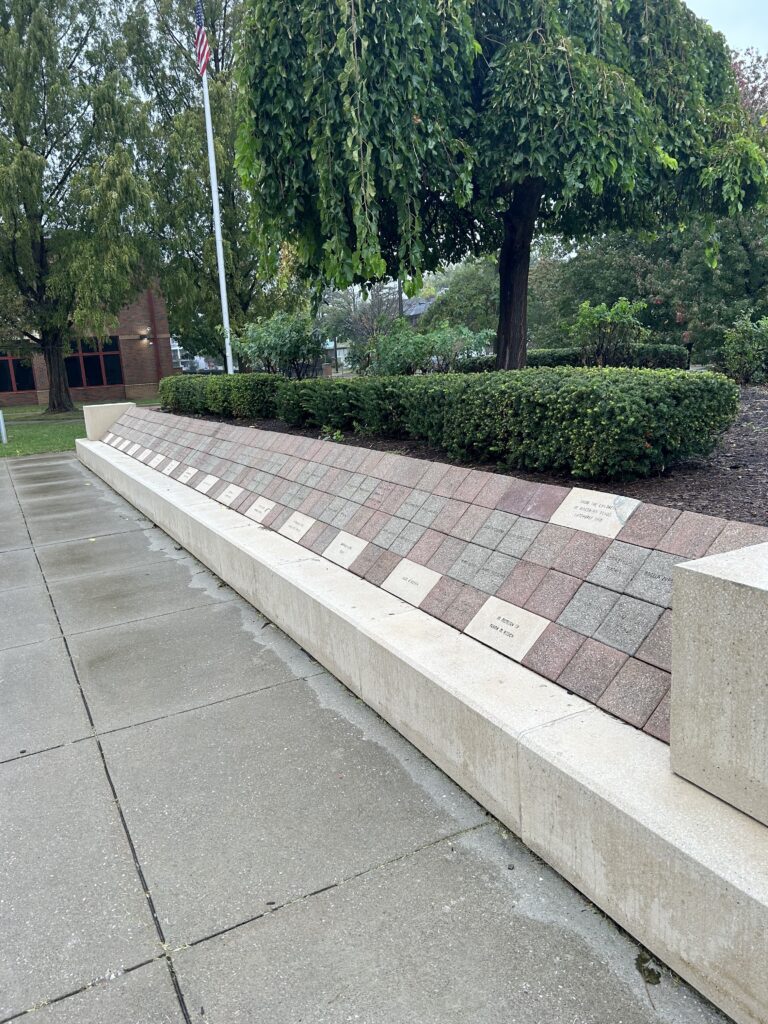
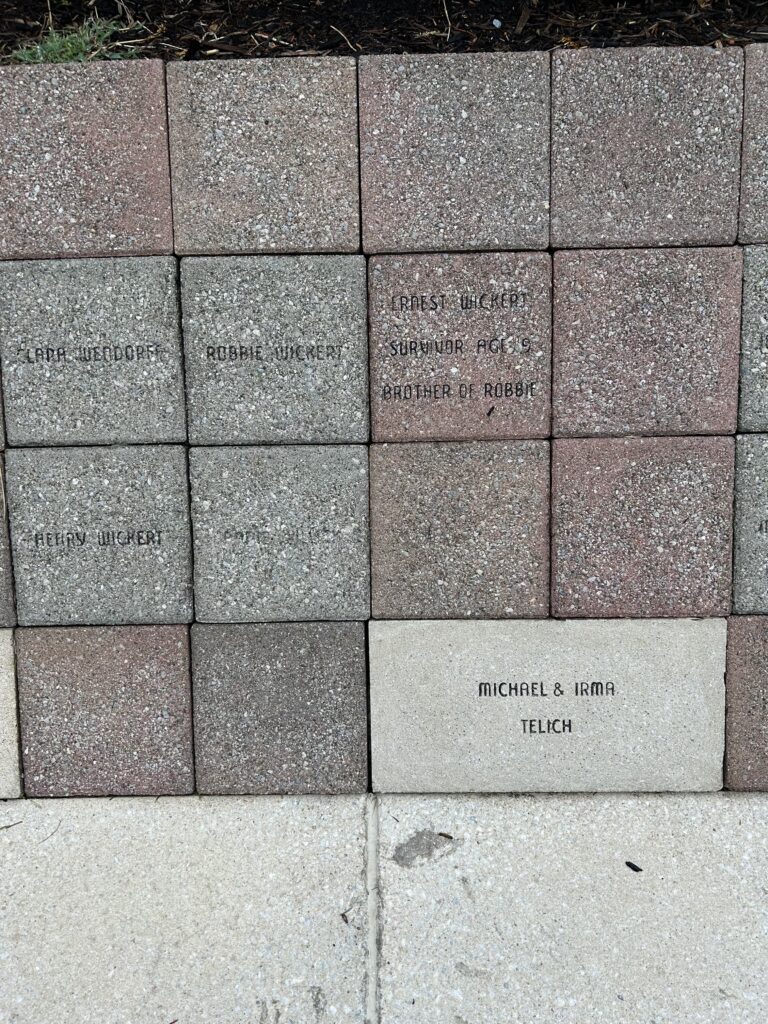
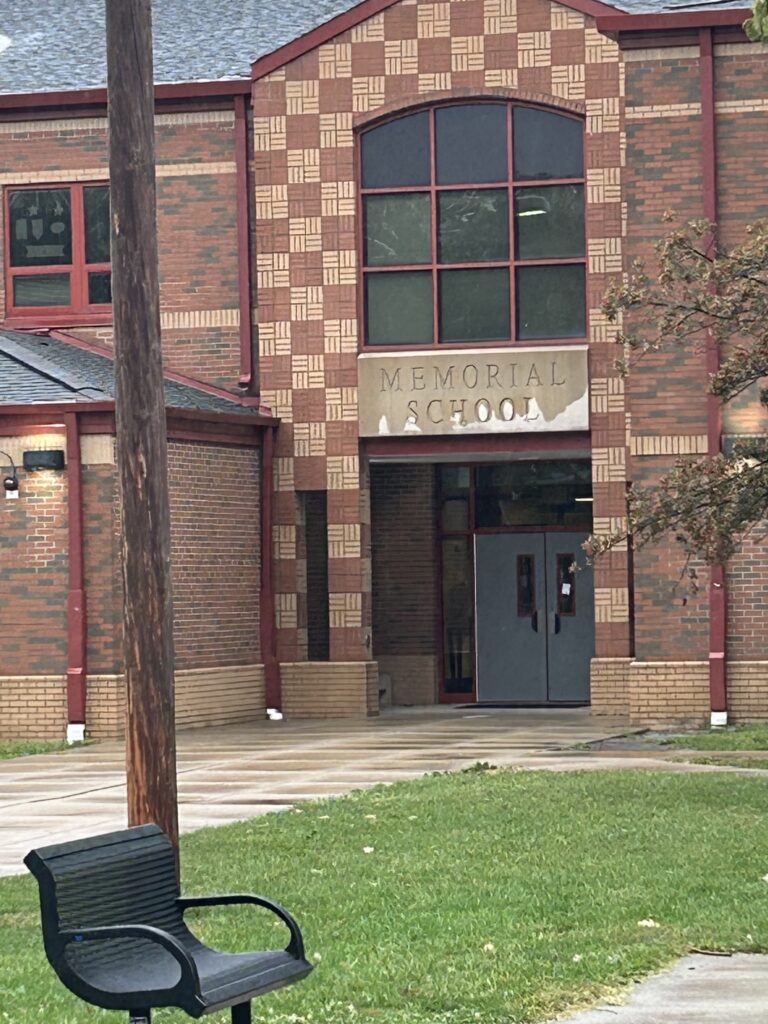
Note: A very special thank you to Hunter Garner, Trace Swann, and Shane Moody for their help with this episode!
Sources
-
- Collinwood School Fire – ClevelandHistorical.org
- Collinwood School Fire – Case Western University
- CollinwoodFire.org
- The Lake View School Fire – DHI
- CollinwoodFire.com
- Remember the Lakeview School Fire (Also Known As Collinwood School Fire) – Minnesota Department of Public Safety
- The Collinwood Tragedy – The Kent State University Press
- 10 Heartbreaking Facts About the Collinwood School Fire – StrangeAgo.com
- Grace Fiske – AGraveConcern.wordpress.com
- Collinwood school fire: 100 years later, an angel still kneels over the children – Cleveland.com

